- Breed Category: Toy Group
- Country of Origin: United Kingdom
- Average Height: 30-33 cm; 12-13 inches
- Average Weight: 5.9-8.2 kg; 13-18 pounds
- Average Life Span: 12-15 years
- Grooming Requirements: Regular brushing, moderate maintenance
- Exercise Requirements: Moderate, daily walks needed
- Coat Type: Silky, medium-length
- Coat Color Variations: Blenheim, tricolor, ruby, black & tan
- Shedding Level: Moderate
- Ear Type: Long, feathered
- Tail Type: Feathered, carried high
- Temperament: Affectionate, gentle, friendly
- Intelligence Level: High
- Barking Tendency: Low to moderate
- Compatibility with Children: Very good
- Compatibility with Other Pets: Generally good
- Training Ease: Easy, eager to please
- Common Health Issues: Heart disease, hip dysplasia, eye conditions
- Dietary Needs: Balanced diet, watch weight
- Energy Level: Moderate
- Drooling Tendency: Low
- Sensitivity to Weather: Sensitive to heat
- Overall Maintenance Level: Moderate
- Original Purpose: Companion dog
- Year of Recognition by Kennel Clubs: 1945
- Famous Breed Representatives: Rex of Littlecourt
- Apartment Friendly: Yes
- Best Suited For: Families, singles, seniors
- Cost of Ownership: Moderate to high
- Unique Traits: Expressive eyes, friendly nature
- Cultural Significance: Favoured by British royalty
- Popularity Rank: High
Think all small dogs are just yappy companions? The Cavalier King Charles Spaniel might just change your mind. This breed is a delightful mix of elegance and playfulness, making it a favourite among dog lovers. In this article, we’ll dive into the breed’s unique characteristics, rich history, and essential care tips.
The Cavalier King Charles Spaniel has a storied past, tracing back to British nobility. Named after King Charles II, who adored these dogs, they were bred to be lap warmers and companions. Their lineage includes toy spaniels, which were popular in the 16th and 17th centuries. Over time, they’ve evolved into the affectionate and gentle dogs we know today, beloved for their friendly nature and adaptability.
Early Development and Historical Significance
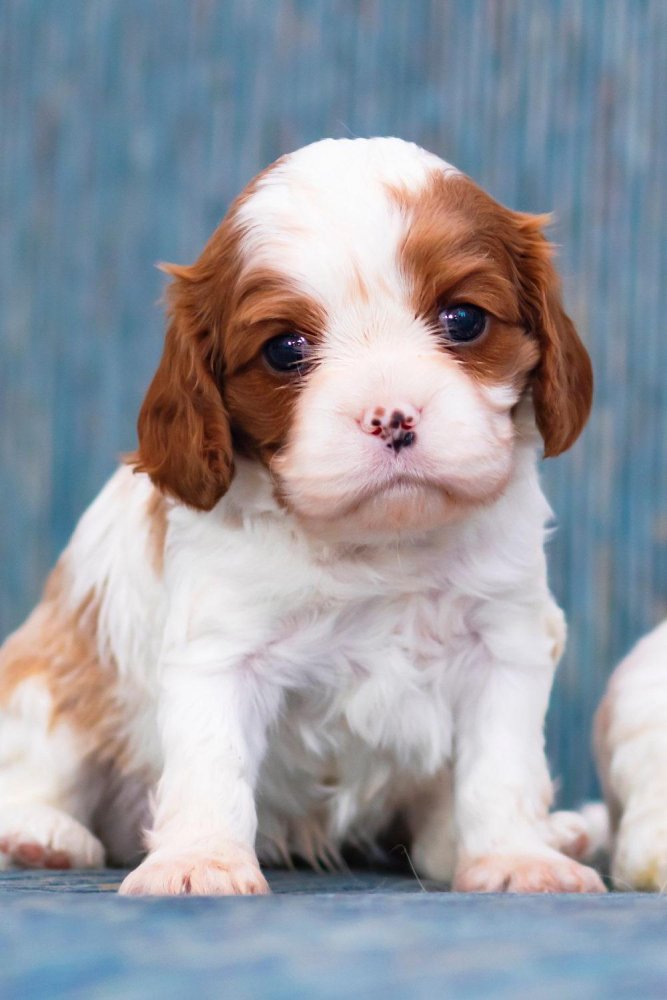
Role in British Nobility and Companionship
The Cavalier King Charles Spaniel has long been associated with British nobility, serving as cherished companions to the elite. These dogs were more than just pets; they were symbols of status and affection. Their presence in royal courts was a testament to their gentle nature and endearing charm. They were often seen lounging on the laps of aristocrats, providing warmth and companionship during chilly evenings.
Key Historical Figures
King Charles II was instrumental in the breed’s development, his fondness for these spaniels evident in their very name. His court was filled with these delightful dogs, and he was rarely seen without them. This royal endorsement significantly boosted their popularity, cementing their place in history.
Physical Characteristics
Cavaliers are known for their expressive eyes and silky coats, which come in four distinct colour patterns: Blenheim, tricolour, ruby, and black and tan. Their small size, typically weighing between 5 to 8 kilograms, makes them perfect for both city and country living. Despite their petite stature, they carry themselves with a regal grace, a nod to their noble heritage.
Appearance and Unique Traits
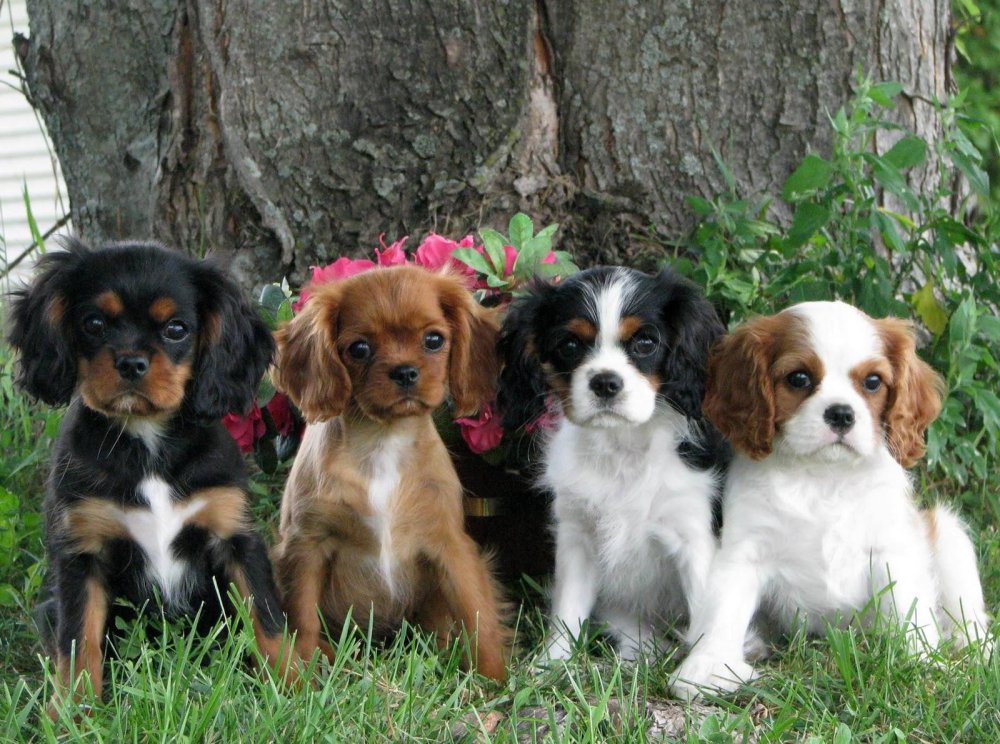
Distinctive Features
The Cavalier King Charles Spaniel is a small dog with a big personality. Their size, usually between 5 to 8 kilograms, makes them ideal for any living space. But it’s their coat that truly stands out. With four distinct colour patterns—Blenheim, tricolour, ruby, and black and tan—each dog is a masterpiece in its own right. Their silky coat is not just beautiful but also soft to the touch, adding to their appeal.
Expressive Eyes
One look into their large, expressive eyes, and you’ll understand why they’re so adored. These eyes are not just windows to their soul but also a key feature that sets them apart. They convey a range of emotions, from curiosity to affection, making them incredibly engaging companions.
Temperament and Behaviour
Cavaliers are known for their friendly and gentle nature. They’re not just lap dogs; they’re eager to please and love being part of the family. Whether it’s a playful romp in the garden or a quiet evening on the couch, they adapt to your lifestyle with ease. Their temperament makes them excellent companions for both young families and older individuals alike.
Personality and Suitability as a Family Pet
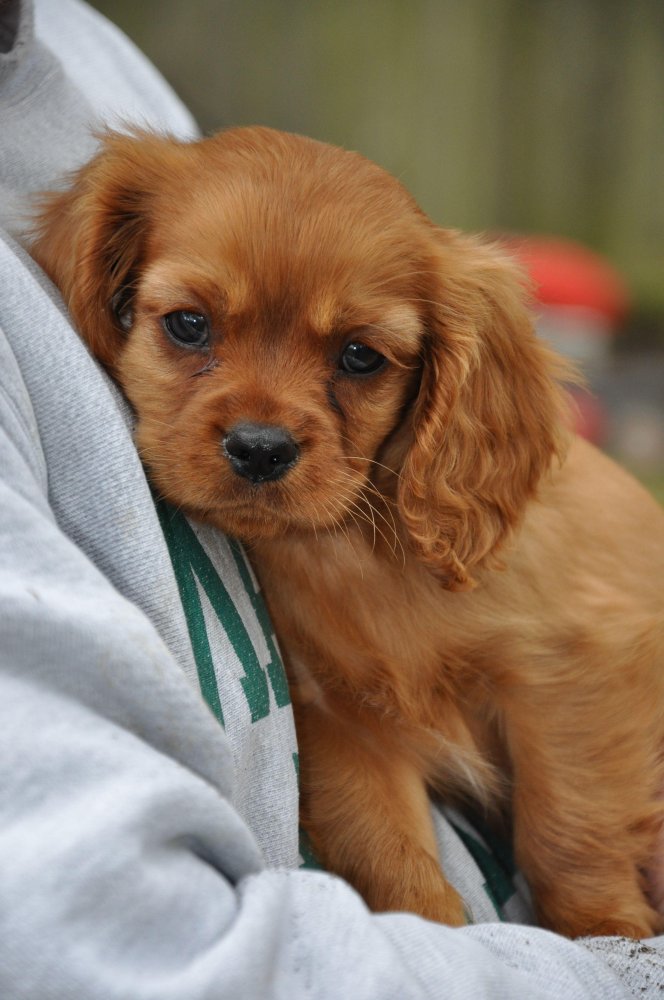
Typical Personality Traits
The Cavalier King Charles Spaniel is a bundle of affection and gentleness. These dogs are naturally sociable, thriving on human interaction and forming strong bonds with their families. Their friendly disposition makes them approachable and easy to love, whether you’re a seasoned dog owner or a first-timer.
Suitability as a Family Pet
When it comes to being a family pet, Cavaliers tick all the right boxes. Their adaptable nature means they fit seamlessly into various family dynamics, from bustling households to quieter homes. They’re not just pets; they’re companions who bring warmth and joy to any setting.
Interaction with Children and Other Animals
Cavaliers are known for their gentle interaction with children, making them ideal playmates. They’re patient and tolerant, which is perfect for families with young kids. Their sociable nature extends to other animals too, often getting along well with other dogs and even cats.
Training and Exercise Needs
Training a Cavalier is generally a rewarding experience. They’re eager to please and respond well to positive reinforcement. While they enjoy a good play session, their exercise needs are moderate, making them suitable for both active and more relaxed lifestyles. Regular walks and some playtime will keep them happy and healthy.
Training, Exercise, and Health
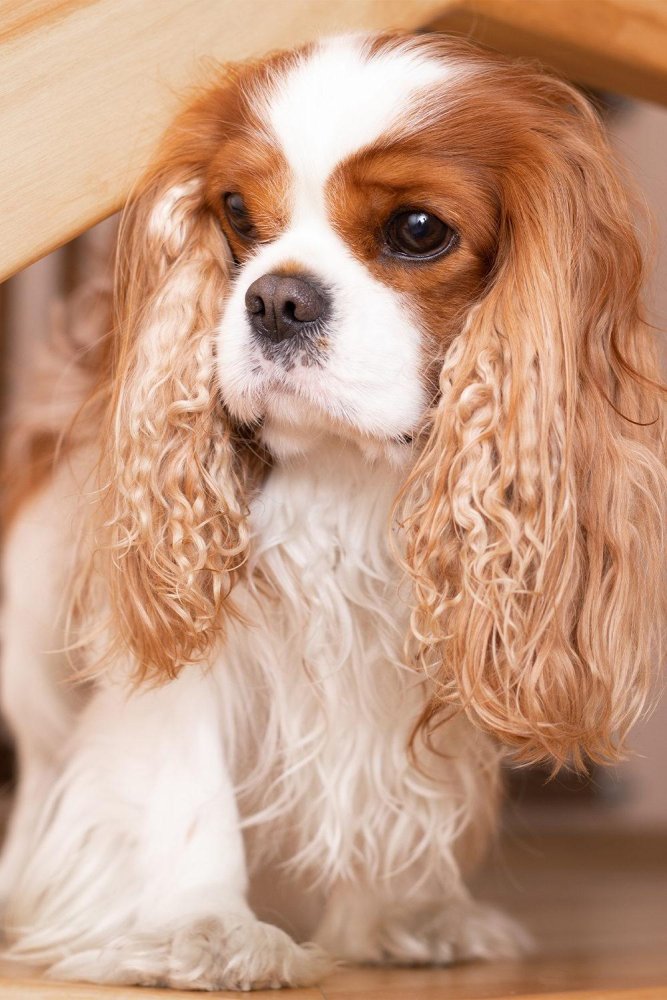
Importance of Early Training and Socialisation
Getting your Cavalier King Charles Spaniel started with training and socialisation early on is crucial. These dogs are naturally sociable, but early exposure to different environments, people, and other animals helps them grow into well-rounded adults. It’s all about setting the foundation for a confident and happy dog.
Recommended Training Techniques
When it comes to training, Cavaliers respond best to positive reinforcement. Think treats, praise, and lots of encouragement. They’re eager to please, so keep sessions fun and engaging. Consistency is key, but remember to be patient and gentle.
Daily Exercise Requirements and Activities They Enjoy
Cavaliers have moderate exercise needs. A couple of short walks a day, combined with some playtime, usually does the trick. They love activities like fetch or a romp in the garden. While they enjoy being active, they’re also content to snuggle up on the couch.
Health and Lifespan
On the health front, Cavaliers generally live between 9 to 14 years. Regular vet check-ups are important to catch any potential issues early. Keeping them at a healthy weight and ensuring they get enough exercise will contribute to a longer, happier life.
Health and Care for Your Cavalier King Charles Spaniel
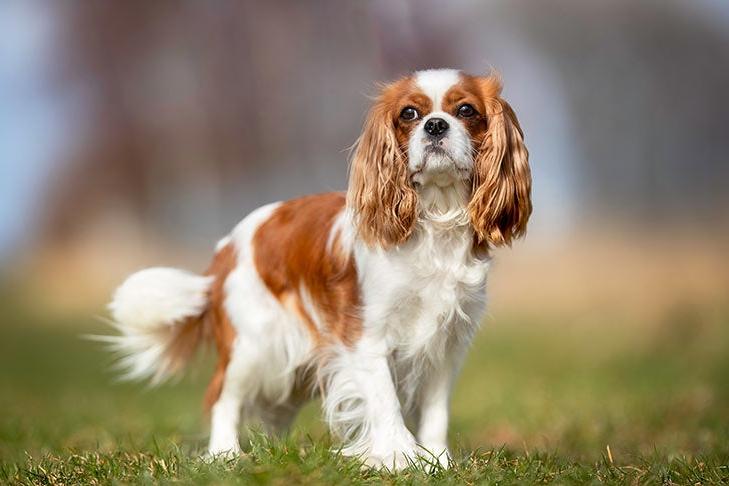
Common Health Issues
Cavaliers are prone to certain health issues, including heart problems like mitral valve disease, hip dysplasia, and ear infections. Regular vet visits are crucial to monitor these conditions and ensure early intervention if needed.
Average Lifespan and Health Tips
With proper care, Cavaliers typically live between 9 to 14 years. To keep them healthy, maintain a balanced diet and ensure they get regular exercise. Monitoring their weight is essential, as obesity can exacerbate health issues.
Preventative Care Recommendations
Preventative care is key. Regular dental cleanings, ear checks, and vaccinations are important. Heart health should be monitored closely, given their predisposition to heart issues. Routine vet check-ups will help catch any potential problems early.
Grooming and Maintenance
Their silky coat requires regular grooming to prevent matting. Brush them a few times a week and bathe them as needed. Pay special attention to their ears, as Cavaliers are prone to ear infections. Regular ear cleaning can help prevent this.
Coat Care and Grooming Routines
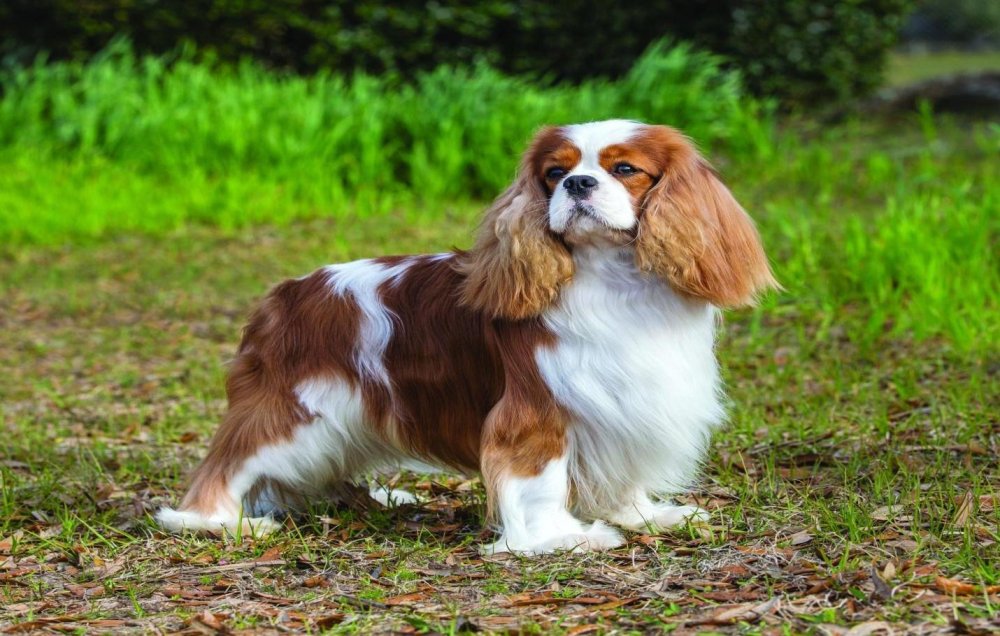
Shedding and Seasonal Grooming Tips
The Cavalier King Charles Spaniel’s coat is a thing of beauty, but it does require some attention. Regular brushing, at least three times a week, helps keep their silky fur free from tangles and matting. During shedding seasons, usually spring and autumn, you might notice more hair around the house. A good brush with a slicker or bristle brush can help manage this. It’s also a great bonding time with your dog.
Diet and Nutrition
Feeding your Cavalier a balanced diet is crucial for their overall health. Look for high-quality dog food that lists meat as the first ingredient. Avoid fillers like corn and soy. Portion control is important, as Cavaliers can be prone to weight gain. Treats are fine in moderation, but make sure they don’t make up more than 10% of their daily intake. Fresh water should always be available, and regular vet check-ups will ensure their diet meets their specific needs.
Nutritional Needs and Feeding Tips

Foods to Include and Avoid
For optimal health, Cavaliers need a balanced diet rich in protein, healthy fats, and essential vitamins. Choose high-quality dog food with meat as the primary ingredient. Avoid foods with fillers like corn, soy, and artificial additives. Fresh fruits and vegetables can be a great addition, but steer clear of toxic foods like chocolate, grapes, and onions.
Feeding Schedules and Portion Recommendations
Establishing a consistent feeding schedule is key. Most adult Cavaliers do well with two meals a day. Puppies may require more frequent, smaller meals. Portion control is crucial to prevent obesity, a common issue in this breed. Follow the guidelines on your dog food packaging, but adjust based on your dog’s activity level and weight.
Fun Facts and Trivia
Did you know that the Cavalier King Charles Spaniel was once a favourite of King Charles II, who was so fond of them that he allowed them in any public place, including the House of Parliament? These charming dogs have a royal history and a heart to match!
Famous Cavaliers in Media and History
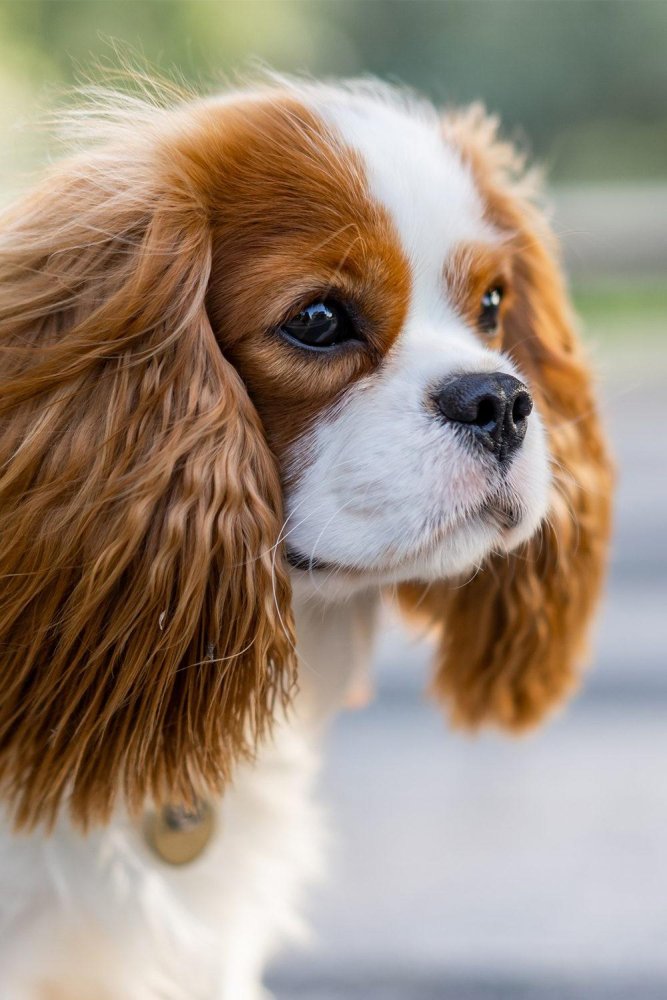
Notable Appearances in Media
The Cavalier King Charles Spaniel has charmed its way into popular culture, appearing in various films and TV shows. One of the most memorable appearances is in the movie “Sex and the City,” where Charlotte York’s beloved pet, Elizabeth Taylor, is a Cavalier. This breed’s endearing looks and gentle nature make it a favourite choice for directors looking to add a touch of elegance and warmth to their productions.
Historical Tidbits
Beyond the silver screen, Cavaliers have left their paw prints in history. Queen Victoria, known for her love of animals, had a Cavalier named Dash. Dash was so cherished that he was given a marble effigy at Windsor Castle. These dogs have been companions to the elite for centuries, often depicted in paintings alongside their noble owners, symbolising loyalty and affection.
Interesting Facts
- Cavaliers were once used as foot warmers for ladies in drafty castles.
- They were bred to have a gentle temperament, making them perfect for close companionship.
- The breed’s name honours King Charles II, who was rarely seen without his spaniels.
Final Thoughts
The Cavalier King Charles Spaniel is a charming, adaptable companion. With their affectionate nature and regal history, they bring joy to any household. Balancing moderate exercise with regular grooming ensures they thrive as beloved family members. Embrace the journey of owning a Cavalier, and you’ll find a loyal friend for life. Consider welcoming this delightful breed into your home and experience their enduring companionship.
